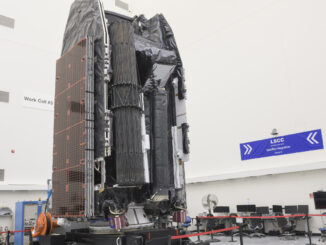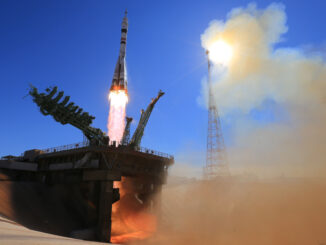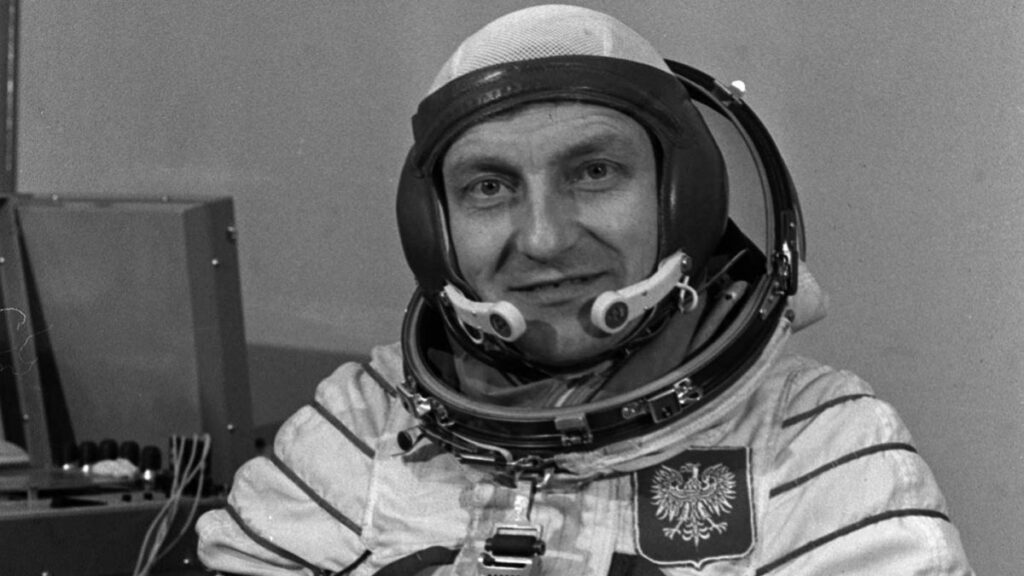 There was many people, whose names were written with gold letters in the history of human space flights, until this day. Among them, there is one and still the only Polish cosmonaut – General Mirosław Hermaszewski. In 2022 it has been 44 years since his cosmic journey.
There was many people, whose names were written with gold letters in the history of human space flights, until this day. Among them, there is one and still the only Polish cosmonaut – General Mirosław Hermaszewski. In 2022 it has been 44 years since his cosmic journey.
Mirosław Hermaszewski was born on 15th September 1941 into a Polish family in Lipniki – in the former Volhynia Voivodeship of Poland, but at that time – a part of Reichskommissariat Ukraine (nowadays the region is a part of Ukraine and the village doesn’t exist). He had six older siblings. When he was a child, his mother saved him from being killed by the Ukrainian Insurgent Army, during their attack on the Lipniki village. However, as many as nineteen members of his family, were killed in the massacres in Volhynia, between 1943 and 1945, including his father, Roman Hermaszewski, Warrant Officer of the Polish Army, killed by the UIA in Berezny.
In 1945 the Hermaszewski family, as many others residing that region was displaced and expatriated from the eastern borderlands. They were brought to Lower Silesia region of Poland and stayed in Wołów, in the vicinity of Wrocław. Mirosław Hermaszewski has completed the primary school and then the High School of Nikolaus Copernicus there. Between 1956 and 1957, he was a member of the Association of Polish Youth and in 1962, joined to the Polish United Workers’ Party. From his early age, he was interested in aviation and was a good model maker, trying to spend every moment with his passion. In 1960, he joined the local Aero Club of Wrocław. Next year, finished training and gained his glider pilot license (including aerobatics). Next, he underwent training on aeroplane, flying a CSS-13 biplane (a Polish licensed built Polikarpov Po-2 aircraft) in Grudziądz. On 13th November 1961, his dream came true and he joined the Polish Air Force University in Dęblin. In the beginning, he flew a TS-8 Bies (Polish two-seat trainer aeroplane of the time). Later, being just 20 years old, he achieved qualification of the 3rd Class Fighter Pilot and flew a MiG-15 jet. After graduation of the Polish Air Force University on 22nd March 1964 with a rank of Second Lieutenant, Hermaszewski was assigned to the 62nd Fighter Aviation Regiment of the Polish Air Force in Poznań. Two years later, he achieved qualification of the 1st Class Fighter Pilot and completed training for piloting supersonic MiG-21s. Between 1964 and 1978, Hermaszewski served in the Country’s Air Defence Forces. Here it is worth to mention two things, that happened in the meantime – in 1966, Mirosław Hermaszewski has married his wife, Emilia Łazar as well as the fact, that for his achievements in service, he was rewarded with a referral to studies in the General Staff Academy in Warsaw and graduated it with distinction in 1971. In the aforementioned period from the mid-60s to late 70s, he served as Squadron Leader in the 28th Fighter Aviation Regiment in Słupsk-Redzikowo, as well as Deputy Commander in the 34th Fighter Aviation Regiment in Gdynia – Babie Doły. Next, as Commander of the 11th Fighter Aviation Regiment in Wrocław.
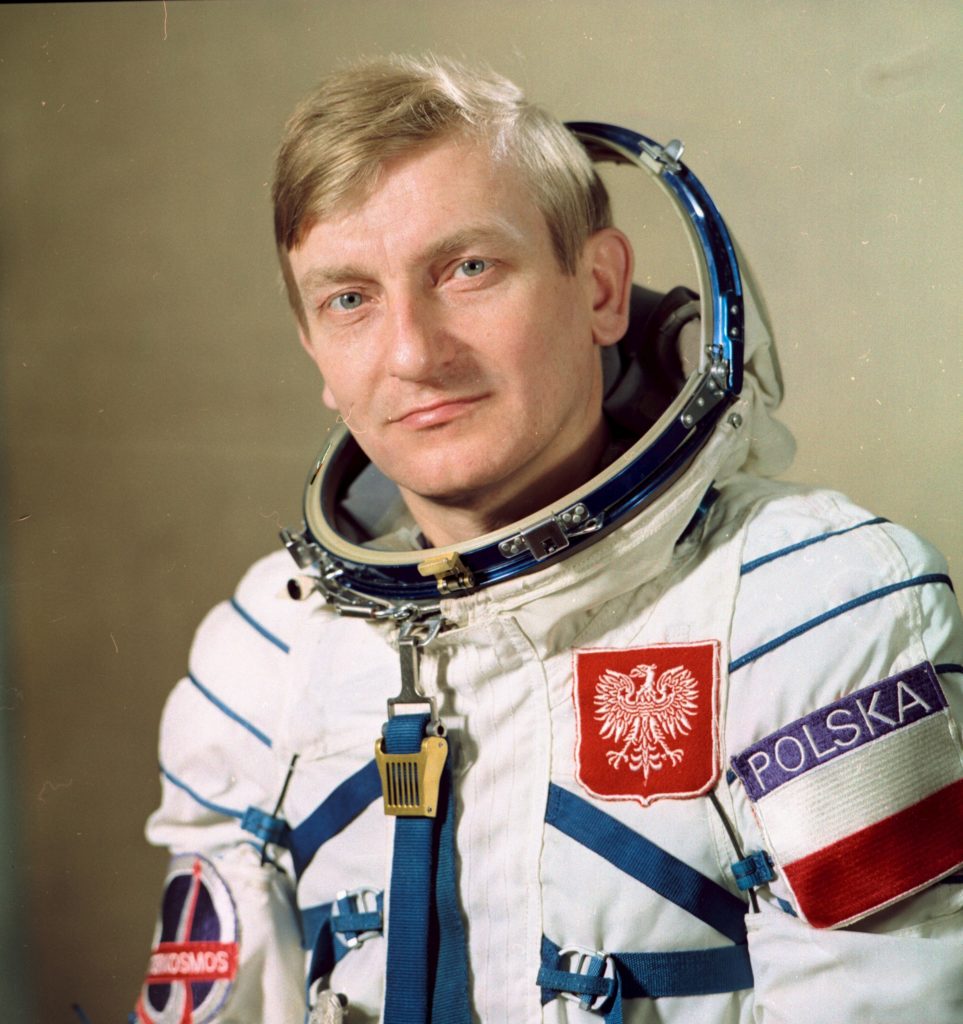
In July and September, 1976, during the meeting held in Moscow, representatives of eight Eastern Bloc countries, including the People’s Republic of Bulgaria, Hungary, the German Democratic Republic, Cuba, Mongolia, the People’s Republic of Poland, the Socialist Republic of Romania and Czechoslovakia, discussed and approved the new USSR initiative regarding the development of the Soviet international space research Interkosmos program, as well as participation of citizens of the fraternal socialist countries in international manned space flights. There were two countries, considered as favourites – the German Democratic Republic and Czechoslovakia. As the decisive factor was considered the fact, that both were the most technologically advanced at that time and already had the biggest contribution to current works within the Interkosmos program. It is also worth to mention, that Erich Honeker, then the leader of the GDR, was most interested in sending the East German citizen into space as the very first one in the programme (which actually didn’t happen, as their man – Sigmund Jähn flew as the third).
Nevertheless, every country participating in the meeting, wanted to send their men into space. Eventually, during quite a fierce consultation, it was agreed that citizens of all socialist countries participating in the Interkosmos program will take part in flights on Soviet spacecraft and space stations with Soviet cosmonauts from 1978 to 1983. Representation of the People’s Republic of Poland, decided to provide their economical and historical arguments, stating that Poland was the USSR’s main commercial partner and the closest ally in defeating the Third Reich. As it turned out, their arguments worked and the Polish representants managed to convince Moscow. The Soviets decided, that one of the crews will also consist a citizen of Poland.
At the turn of October and November 1976, a group of Soviet medical specialists, headed by the USSR Pilot-Cosmonaut V. G. Lazarev was sent to Czechoslovakia, the GDR and to Poland. In each of these countries, Soviet specialists consulted on issues related to the selection of cosmonaut candidates, and analysed the research carried out according to the established method of medical examination. As a result, from among few hundreds of Polish military pilots, two of them, namely colonel Zenon Jankowski and Mirosław Hermaszewski – then in the rank of major, were chosen. Ultimately, it was just Hermaszewski, who was finally decided to fly into space, as Jankowski was elected to be his alternate.

Soon, on 4th December 1976, Mirosław Hermaszewski flew to the Star Town located near Moscow, to start training, together with already experienced USSR cosmonaut colonel Pyotr Klimuk. Both were assigned as a crew to the Soyuz 30 mission. Klimuk was appointed as the mission’s commander, because of his experience in space flights (already took a part in Soyuz 13 and Soyuz 18 missions before) and in accordance to the Interkosmos program establishments, stating that crew’s commander had to be a pilot-cosmonaut of the USSR. Hermaszewski was entrusted with role of the research cosmonaut. Interesting is fact, that part of the training took place on a Tu-134 aeroplane, flying at altitude of 10 km to best mimic conditions on the station, to which the crew had to dock their spacecraft and then stay at it for a few days during the mission.
Just few minutes before the launch into space, Mirosław Hermaszewski said – “I, a citizen of the People’s Republic of Poland, feel honored of allowing me to perform a space flight on the Soviet ship Soyuz 30 and the orbital station Salyut 6. I will not fail the trust shown to me!”
On 27th June, 1978 at 15:27:21 UTC, the Soyuz 30 mission has begun. Major Mirosław Hermaszewski, together with colonel Pyotr Klimuk, launched from the famous Baikonur spaceport in Kazakhstan on board the Soyuz 7K-T spacecraft, on top of the orbital carrier rocket Soyuz-U, to his first and the only flight into space. Speaking about the numbers, it is worth noting that Soyuz 30 was the thirty sixth Soviet manned spacecraft.
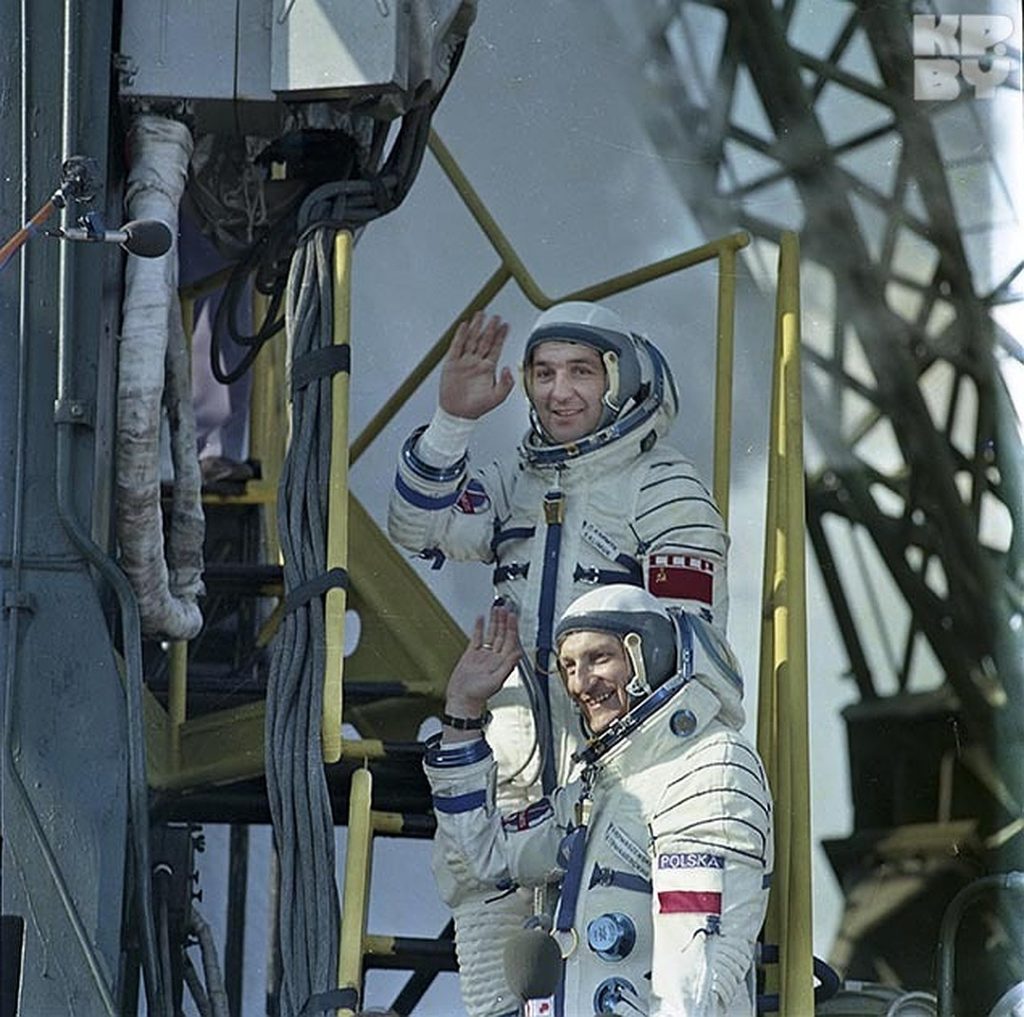
The initial orbital parameters were: apogee (the highest point of the orbit) – 246 km, perigee (the lowest) – 199 km, inclination of the plane of the orbit – 51° 66 ‘. Duration of one lap around the orbit, was 89 minutes. It is worth to mention, that cosmonauts took with them, inter alia, the Polish flag, national emblem and a few memorabilia. During the first three laps of the Earth, the crew carried out an inspection of condition of the devices and checked for leaks. After that, the cosmonauts took their suits off. During the fourth and fifth laps the flight altitude was increased, and Soyuz began to catch up with Salyut 6. After the sixth lap, the crew went to sleep, which lasted the next six laps. The cosmonauts had to rest before the hardest part of their mission – docking to the Salyut 6 orbital station. Then preparations for the approach maneuver and connection with the station began. During the seventeenth lap, the cosmonauts were in the immediate vicinity of their target.
The Soyuz 30 has moored to the Salyut 6 at 17:08:47 UTC, during the eighteenth lap around the orbit. The next day, on 28th June 1978, at 20:11 UTC, the Soyuz 30 has officially docked at the Salyut 6 research space station, when the airlock between the space ships was opened.

Pyotr Klimuk and Mirosław Hermaszewski were greeted by Vladimir Kovalyonok and Aleksandr Ivanchenkov of the Soyuz 29 mission, the resident crew of the Salyut 6 space station, who already had been on board for 12 days. For the third time, the Salyut was a four-man orbiting space laboratory. The activities of the Soyuz 30 crew were severely curtailed, so as not to interfere with the Soyuz 29 crew. On the Soyuz 29 crew’s rest day, the international crew had to stay in their Soyuz space ship to perform the experiments. During the eight days of his stay at the space station, Mirosław Hermaszewski as the research cosmonaut, conducted many experiments. One of them was a crystallization experiment which produced 47 grams of cadmium tellurium mercury semiconductors for use by infra-red detectors on board the station. The yield of those experiments performed in space was far greater, than during ground-based experiments (50% to 15% respectively). Mirosław Hermaszewski have also photographed Poland in co-ordination with aeroplane taking close-up pictures, but unfortunately, bad weather over the country limited the photo sessions. Additionally, the crew filmed the Aurora Borealis. Science experiments and photography, wasn’t the only task of the Polish cosmonaut during his mission. He also participated in medical experiments, which measured lung capacity and the heart during exercises and in a pressurised suit. One experiment, which all four cosmonauts on board the station participated in, was “Smak” (the Polish word for taste) – a taste experiment which sought answers to why some food was less palatable in weightlessness. After eight days of gathering the above-mentioned data, Mirosław Hermaszewski and Pyotr Klimuk packed their experiments into the Soyuz capsule to take them back to Earth.
The Soyuz 30 capsule came back to Earth on 5th July, 1978, at 13:30:20 UTC. The crew has landed safely on a steppe, 300 km West of Celinograd (nowadays Astana) in Kazakhstan.
Just after landing, Mirosław Hermaszewski told to a reporter of the Polish Radio – “I am healthy, I feel good, only my feet feel a little bit soft and my head is spinning.”
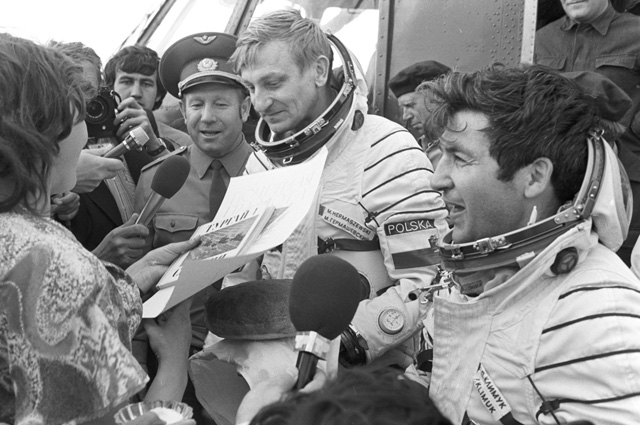
For participation in this flight, Mirosław Hermaszewski received the title of Hero of the Soviet Union and was awarded the Golden Star medal and the Order of Lenin. Presenting these decorations, on the 6th of June, in Moscow, the secretary general of the Communist Party of the Soviet Union Leonid Brezhnev said: – “Dear comrades, we all experience joyful feelings, greeting newly arrived from the space Pyotr Klimuk and Mirosław Hermaszewski. They conducted extremely interesting experiments and research. The flight was distinguished by the fact that the relay race started by Yuri Gagarin, already took over the international socialist crews. The son of Copernicus’ homeland was in space, it is wonderful, you can be proud of it.”
Also, the Polish authorities decided to award the country’s first cosmonaut. At the request of the Political Bureau of the Central Committee of the Polish United Workers’ Party, the Council of the People’s Republic of Poland in recognition of outstanding merits, courage and bravery as well as exemplary task execution in the first Polish-Soviet space flight on the scientific research orbital complex Salyut 6, awarded Mirosław Hermaszewski the Order of the Cross of Grunwald First Class. What’s more, on 22nd July 1978, Hermaszewski was promoted to lieutenant colonel.
After his journey into space Mirosław Hermaszewski continued military career. Between 1981 and 1983, he was a formal member of the Military Council of National Salvation, but as he claimed he was included in WRON (the Polish abbreviation for the mentioned council) without his knowledge. He also studied in Moscow at the Military Academy of General Staff at that time and graduated in 1982. On December 13th, 1981, when the martial law in Poland was imposed, he arrived in Warsaw on military orders, but after two weeks he was released to continue studies. In 1983 he was elected as the vice-president of the Main Board of the Polish-Soviet Friendship Society. Since 1987, to 1990 he was the commander of the Officers Aviation High School in Dęblin. In July, 1982 he was promoted to colonel and on 15th September, 1988 – to brigadier general. From December, 1989 to June, 1990 he was the deputy head of the Main Political-Educational Board of the Polish Armed Forces.

Between 1991 and 1992, Mirosław Hermaszewski was Deputy Commander of Air Forces and Air Defense and head of flight safety of the Air Forces and Air Defense, between 1992 and 1995. After that, from 1995, he served as the Air Force Inspector in the General Staff of the Polish Army. Next, after 40 years of service, Mirosław Hermaszewski retired.
During his service, he flew various types of gliders and piston-powered airplanes, as well as – mainly, jet powered MiG-15, MiG-17 and MiG-21, as well as PZL TS-11 “Iskra” and turbo-prop PZL-130 “Orlik”. Had an opportunity to make familiarization flights on combat aircraft of other countries, including F-16, F-18, Mirage 2000-5 and Su-27. His farewell flight as a military pilot, took place on October 5th, 2005 on board the MiG-29UB fighter. In total, he spent 2047 hours and 47 minutes in the air, he made 3473 take offs and landings as well as 10 training parachute jumps.
When retired, brigadier general Mirosław Hermaszewski, was trying his hand in politics and after the local government elections in 2002, he became a member of the Mazovian regional council.

In 2009, he published his memories in a book under the title “Ciężar Nieważkości – Opowieść pilota-kosmonauty” (“The Burden of Weightlessness – the story of pilot-cosmonaut”).
The first and only Polish cosmonaut, and his flight, were – and still are – commemorated, not only in Poland. Firstly, several documentary films were made, and many books were written, about Hermaszewski, his life and the flight itself. The monument-bust of Pyotr Klimuk and Miroslaw Hermaszewski was erected in Vitebsk, a city in north-eastern Belarus.
Due to his flight into space, his person has many references in culture. To mention only few – the transmitted by television scene of a then customary kiss, exchanged by Mirosław Hermaszewski and Salyut 6 crew member Aleksandr Ivanchenkov in a state of weightlessness, inspired Maciej Zembaty to write a lyrical “Ballade about Major Hermaszewski”, performed at the Festival of Real Song in Gdynia on 21st August, 1981. The National Bank of Poland issued to circulation a 20 Zloty coin commemorating his person on 12th October, 1978. The Post of Poland issued a letter stamp with a nominal value of PLN 1,50 – “Mirosław Hermaszewski – the first Pole in space” and a block of stamps symbolically presenting Mirosław Hermaszewski and his flight. Not only Poland decided to memorialize the Polish cosmonaut, as – for example, the Vietnamese Post also issued a stamp with his portrait. The fun fact is that the name of Hermaszewski on the mentioned stamp, was actually written as – “M. HEPMAZEPSKI”.

In recognition of his overall contribution to Poland and Polish space program, his flight into space and forty years of military career, Hermaszewski was awarded with many medals and distinctions, as already mentioned above.
After retirement, he lived the rest of his life near Warsaw. With his wife, Emilia, he has a son – Mirosław Roman Hermaszewski, grad student of the Polish Air Force University, pilot and military reserve officer, as well as a daughter – Emilia, and four grandchildren.
For the rest of his life Hermaszewski was still in touch with Pyotr Klimuk, and during the years that passed from their space flight, they visited each other several times. And because flying was still his greatest passion, he was occasionally flying gliders and GA aeroplanes. What’s more – he was quite often taking a part in meetings and air shows as a guest.
Sadly, general Mirosław Hermaszewski passed away in a hospital in Warsaw on Monday, 12th December 2022. He was 81 years old. With the passing of the first and the only Pole who flew into space, certain era of Polish aviation and cosmonautics came to an end.
Although no other Polish national person flew into space again until today, people with Polish roots were involved in space flights. We will yet have to wait, until another person from Poland will fly into space. However, in November 2022, Sławosz Uznański was selected as a member of the European Space Agency astronaut reserve. Thus, he now stands the chance of becoming the second Polish individual to fly into space in the years to come.
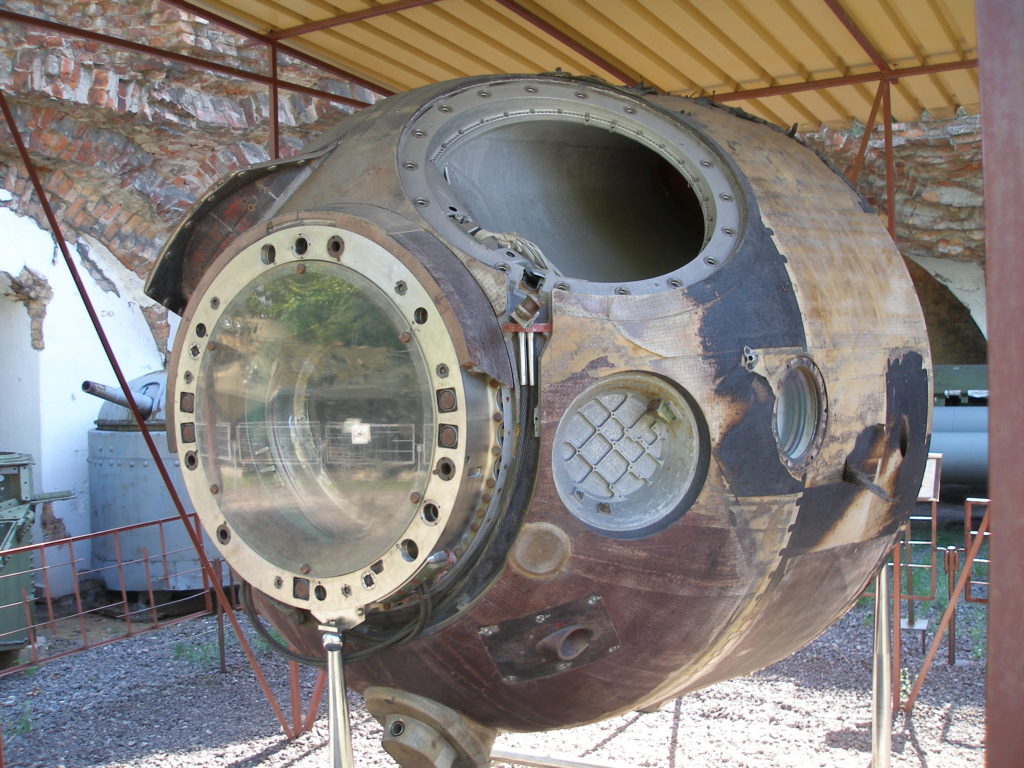
Sources:
- Полеты по программе «Интеркосмос» – Козырев Валентин Иванович, Никитин Станислав Александрович / Flights within the “Interkosmos” program – Kozyrev Valentin Ivanovich, Nikitin Stanislav Aleksandrovich
- “Mirosław Hermaszewski – pierwszy Polak w kosmosie” / “Mirosław Hermaszewski – the first Pole in space” – polskieradio.pl, 05.07.2018.
- Wikipedia.org
- “40 rocznica lotu Mirosława Hermaszewskiego” / “The 40th anniversary of the flight of Mirosław Hermaszewski” – by Michał Moroz, 28.06.2018, kosmonauta.net
- Roscosmos – www.roscosmos.ru (including the cover photo with M. Hermaszewski)
- Twitter – ESA space history (@ESA_History)


